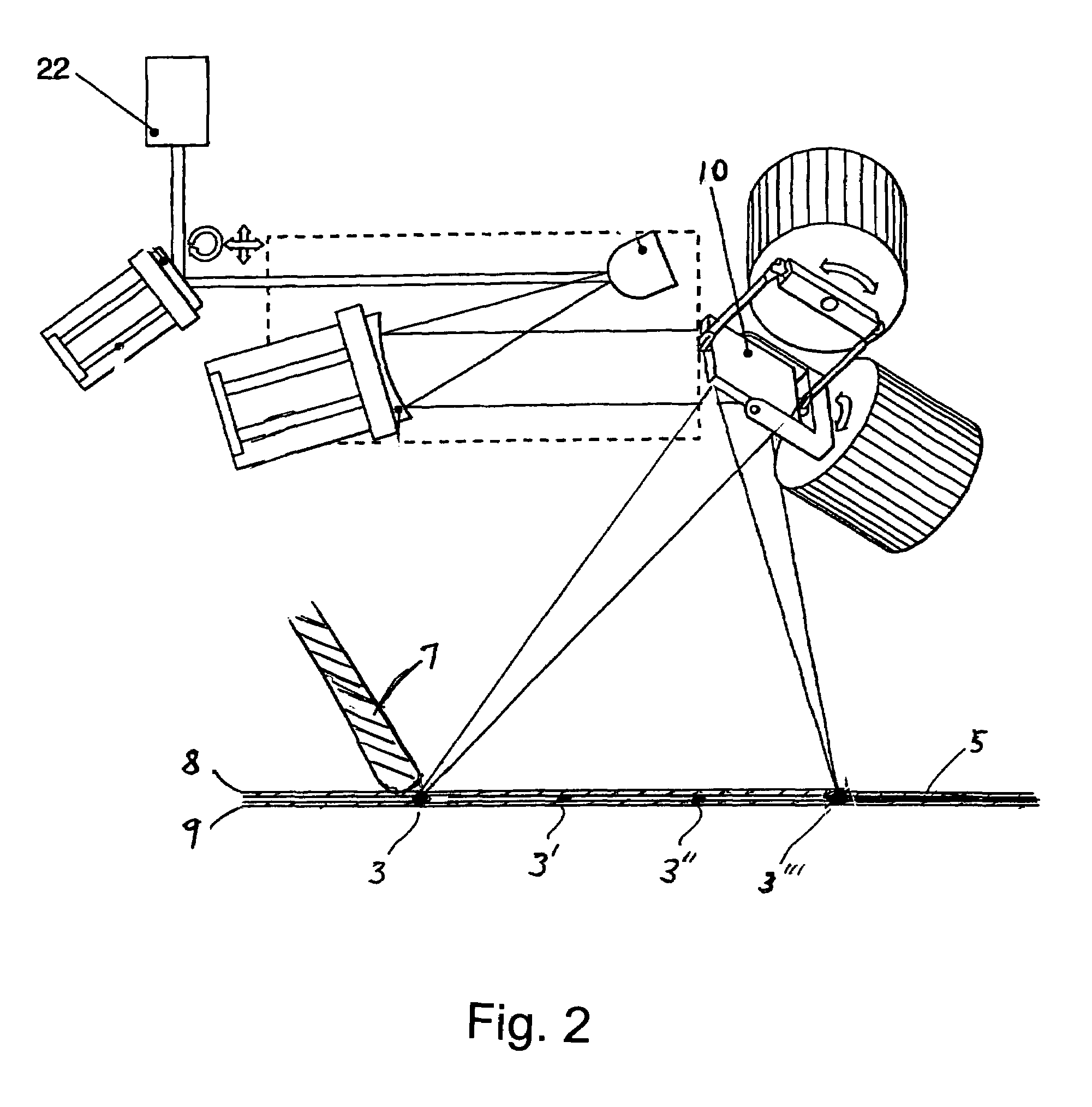Laser beam seam welding with prior laser spot welding
a laser spot welding and laser beam technology, applied in forging/pressing/hammering machines, manufacturing tools, forging/pressing/hammering apparatuses, etc., can solve the problems of gap widths that cannot be closed, coupled clamping and welding speed, and inability to close gap widths, etc., to achieve continuous laser output utilization
- Summary
- Abstract
- Description
- Claims
- Application Information
AI Technical Summary
Benefits of technology
Problems solved by technology
Method used
Image
Examples
Embodiment Construction
[0028]FIG. 2 shows a laser device according to DE 100 27 148, discussed above, further modified to include pressure element 7 according to the present invention. Laser 22 emits a beam which is focused in a first mirror, aimed by two axis scanning mirror 10 so as to focus at a focal point below pressure element 7 to create weld spots 3, 3′, 3″, 3′″ on one of two sheets 8, 9 such that the sheets are maintained in spaced relationship for welding. Scanning mirror is able to conduct welding to create a continuous seam 5 in the area between tack-welds 3, 3′, 3″, 3′″. In a first illustrative embodiment two steel sheets 8, 9 are oriented relative to each other and the intended welding seam is defined. A scanner device travels smoothly over it and guides a laser beam over the surface to be processed. The scanner device is comprised of a three-dimensional pivotable computer-controlled mirror system 10. The scanner device has approximately 300 mm distance to the surface of the sheet, the focus...
PUM
| Property | Measurement | Unit |
|---|---|---|
| length | aaaaa | aaaaa |
| distance | aaaaa | aaaaa |
| width | aaaaa | aaaaa |
Abstract
Description
Claims
Application Information
 Login to View More
Login to View More - R&D
- Intellectual Property
- Life Sciences
- Materials
- Tech Scout
- Unparalleled Data Quality
- Higher Quality Content
- 60% Fewer Hallucinations
Browse by: Latest US Patents, China's latest patents, Technical Efficacy Thesaurus, Application Domain, Technology Topic, Popular Technical Reports.
© 2025 PatSnap. All rights reserved.Legal|Privacy policy|Modern Slavery Act Transparency Statement|Sitemap|About US| Contact US: help@patsnap.com



